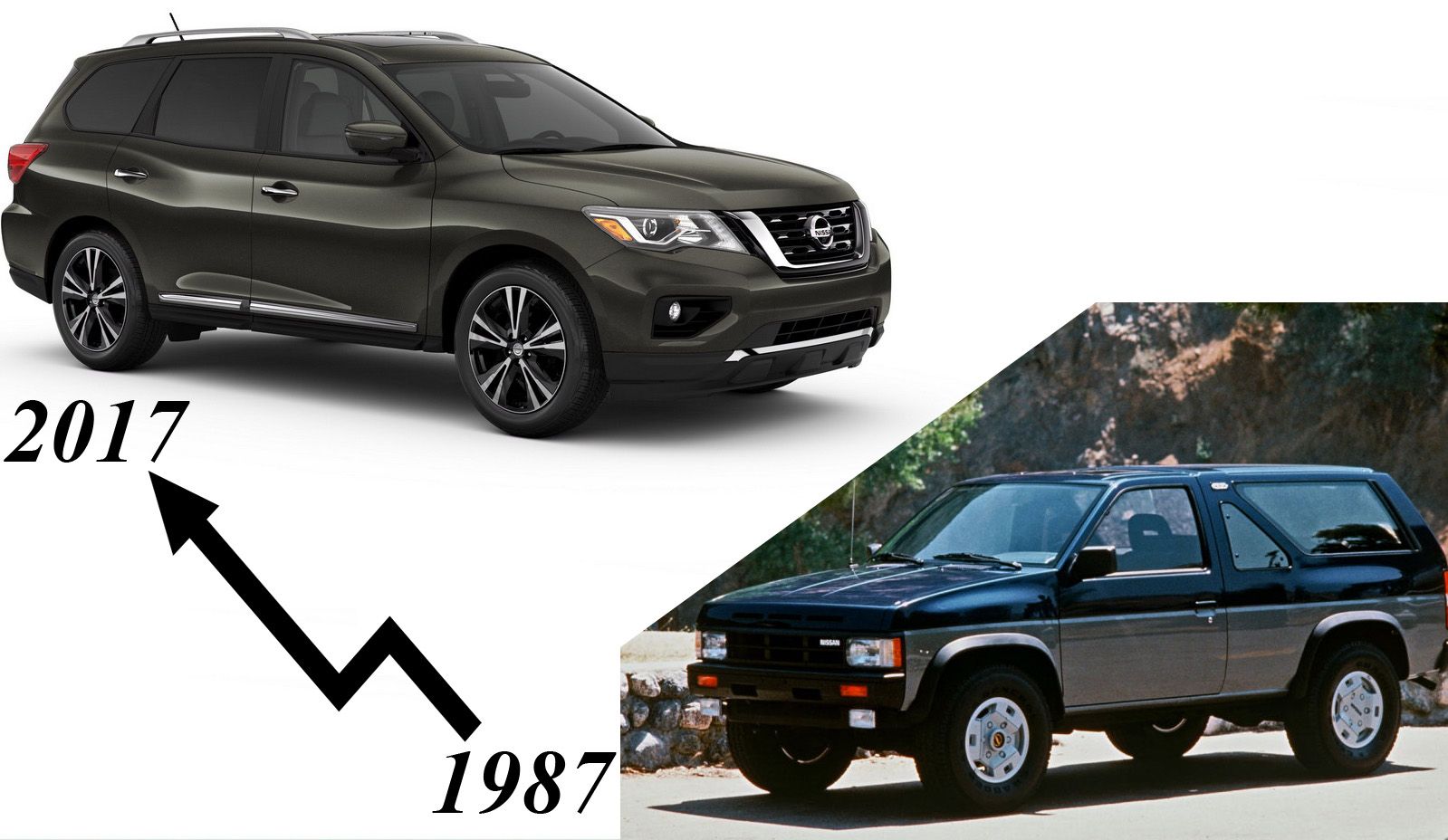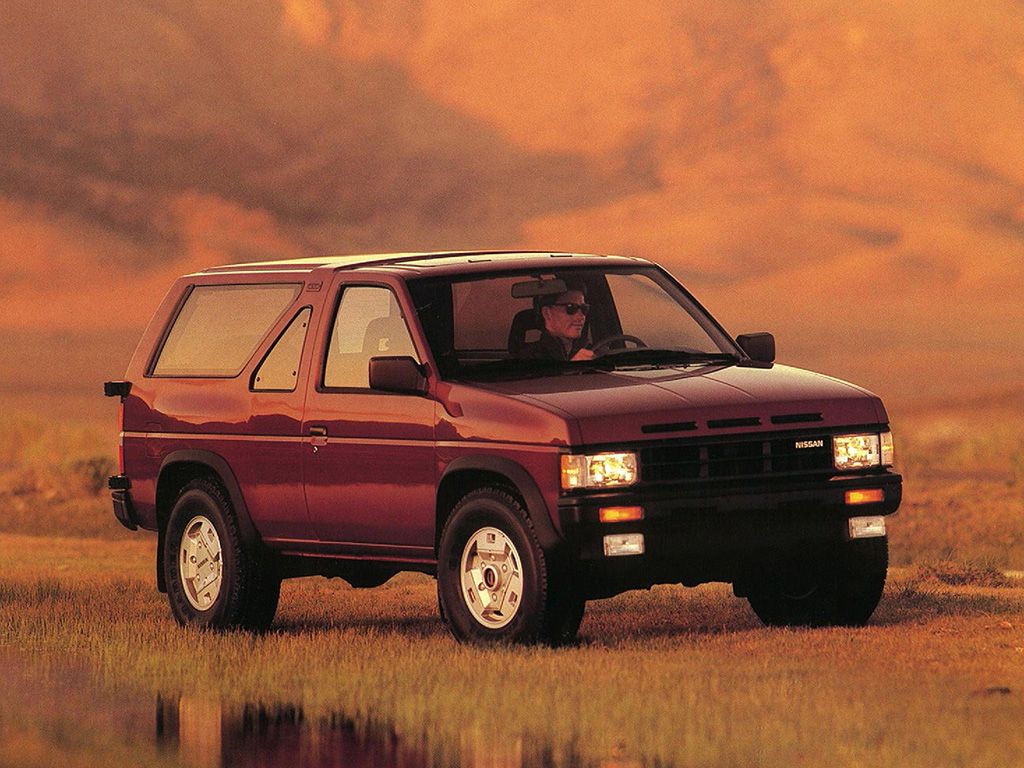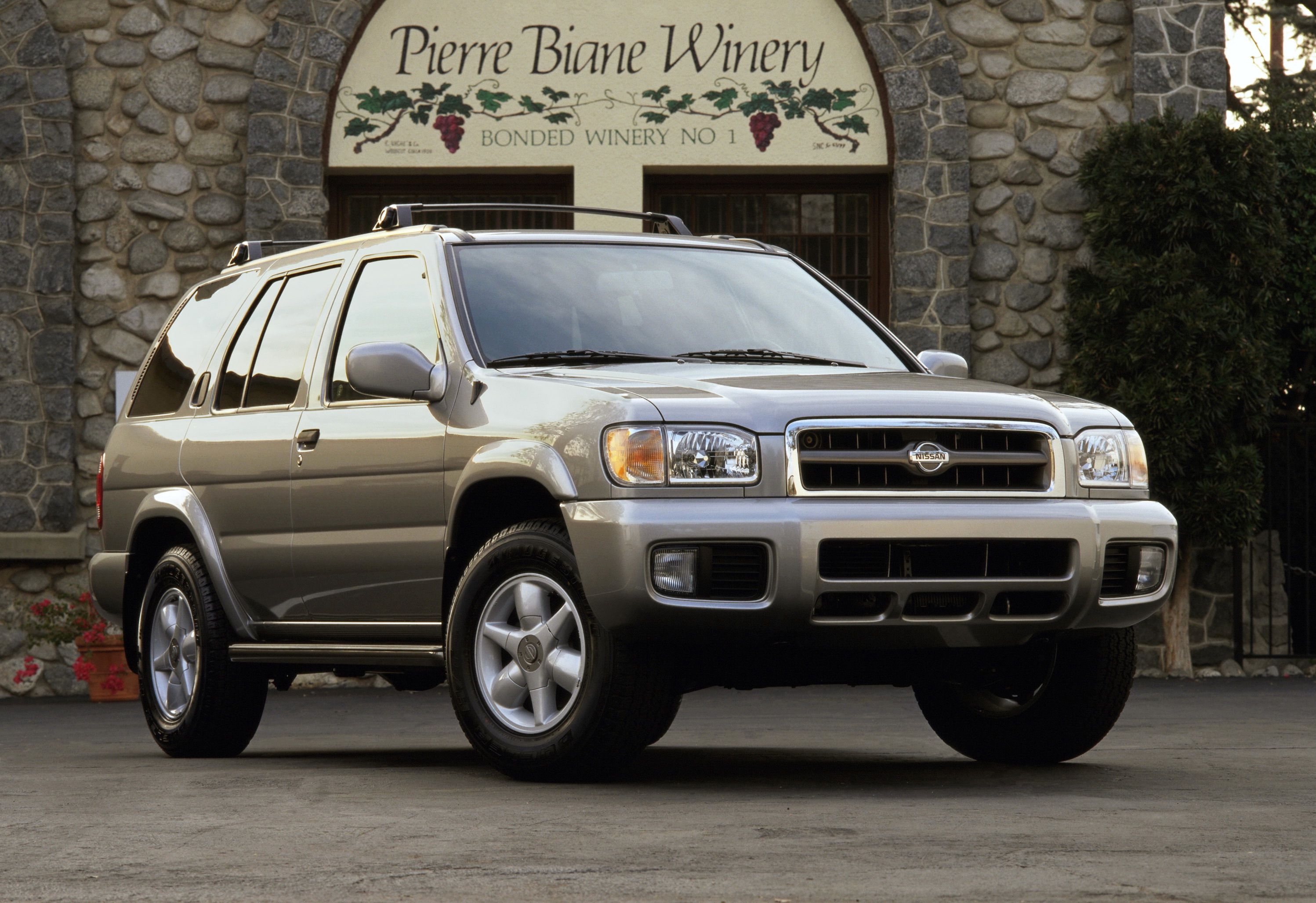Nissan’s heavily revised Pathfinder has broke cover and making the rounds on the interwebz. The 2017 model marks the first major update for the fourth-generation Pathfinder and brings the further adoption of the latest driver assistance features and tech equipment. A lower drag coefficient, a new V-6 with direct injection, an updated Around View monitor system – all showing the Pathfinder has grown up to become a quasi-luxury crossover ready for the masses.
But that’s not how the Pathfinder got its start.
Nope, it was back in 1987 that Nissan debuted the original Pathfinder. It basically boiled down to a Nissan Hardbody pickup truck with a permanent camper shell attached to its bed and a second row of seats between the rear fender wells. In other words, it was like every other body-on-frame SUV at the time – a derivative of a pickup truck.
But like most every other SUV, time made the Pathfinder soft. The second generation debuted for the 1996 model year and brought a unibody design into the picture. The Pathfinder still had respectable off-road chops, but it was somewhat more limited than its predecessor. Unconventionally, however, the Pathfinder returned to a body-on-frame design for its third generation in 2005. It shared plenty of components with the more rugged Xterra SUV, as well.
Things got really different in 2013. The fourth generation Pathfinder abandoned its boxy shape and frame rails for an unquestionably softer and more rounded appearance. The unibody architecture returned, making its ride more car-like, though its interior became more functional.
Now for 2017, the Pathfinder adopts new technology that makes it more efficient, more powerful, a better tow vehicle, and safer for its passengers and those around it. The times, they are a changin’ – as one musician put it. While we certainly miss the rugged nature of the original Pathfinder, it’s impossible to doubt Nissan’s aim at the masses with this versatile crossover.
Let’s have a look at the Pathfinder’s history in detail.
Continue reading for the full run-down.
First Generation (1987 - 1995)
The original Pathfinder was introduced in 1986 as an ’87 model. It featured the same platform and front-end styling as the then-current Nissan Hardbody compact pickup truck. Like the truck, power came from a 2.4-liter four-cylinder. Optional was a 3.0-liter V-6 rated at 140 horsepower. The V-6 got a five-horsepower increase for 1988.
In 1990, Nissan made the Pathfinder a four-door SUV. This made the SUV a more family friendly vehicle thanks to easier access for rear passengers. The rear doors also started the “hidden C-pillar” door handle trend. That same year, the V-6 was boosted to 153 horsepower. Transmissions included both the manual and automatic variety.
Second Generation (1996 - 2004)
Nissan decided to target a more sophisticated buyer for 1996 and introduced a unibody platform under its new second-generation Pathfinder. This set the Pathfinder apart from the then-new Frontier pickup, which continued to use a body-on-frame design. The new Pathfinder received an updated powerplant as well – the 3.3-liter V-6. Power was rated at 168 horsepower.
Then in 2001, Nissan swapped in the 3.5-liter V-6. This new engine was part of Nissan’s new VQ engine family, descendants of which still power Nissan vehicles today. Power was rated at 250 horsepower with the five-speed manual and 240 horses with the automatic transmission.
Innovations included the introduction of an in-dash navigation system, called “Birdview,” that showed 3D-style maps with tall landmarks. The traditional leaf springs were dumped in favor of a multi-link rear suspension used in conjunction with a solid axle.
Third Generation (2005 - 2012)
Things got more rugged when the 2005 Pathfinder debuted. It returned to a body-on-frame design shared with the Xterra, Titan, Frontier, and Armada. Its suspension setup included an independent front end with MacPherson struts while the rear used a solid axle held by a multi-link system and sprung with coil springs. The Pathfinder also grew in size, now offering an optional third-row seat.
Power came from Nissan’s 4.0-liter V-6 that produced 266 horsepower and 288 pound-feet of torque. The 5.6-liter V-8 was introduced in 2008. This 310-horse, 388-pound-foot engine boosted the Pathfinder’s tow rating to an impressive 7,000 pounds.
Sadly for enthusiasts of true SUVs, this would be the highpoint for the Pathfinder.
Fourth Generation (2013 – 2016)
Though the fourth generation Pathfinder took a huge departure from the rugged third gen, it became a much more family friendly vehicle. Its unibody design gave it far more interior space for passengers. Thanks to a inventive second-row seat that folded easily, access to the third row was simple and quick. Total passenger occupancy increased to seven. Impressively, towing remained relatively high at 5,000 pounds.
Power came from a 3.5-liter V-6 that made 240 horsepower. It was mated to a CVT and AWD was optional. Despite grumblings about the CVT, the new Pathfinder achieved up to 27 mpg on the highway – making it far more economical than the third-gen SUV.
2017 Nissan Pathfinder
The refreshed Pathfinder now sports an updated exterior design, a restyled dashboard, and heavily reworked V-6. The new 3.5-liter now has direct fuel injection for more horsepower and better performance.
We’ve got a full review of the new 2017 Pathfinder, so check it out [here.
->art173724]



